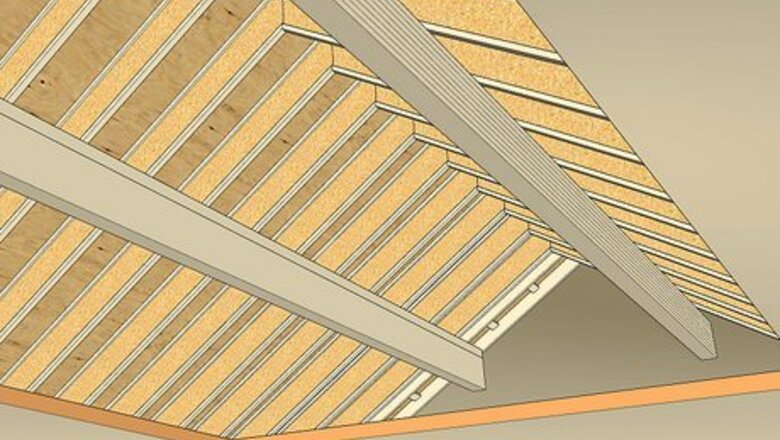
views
Measuring Slope from the Rafters
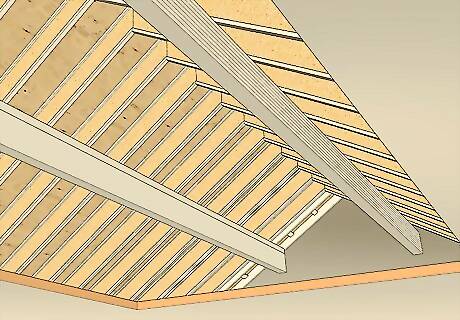
Access a rafter. Measuring from the underside of the roof is usually the most accurate way to find the slope, since there is no roofing material to make an uneven surface. Any of the following will give you a good measurement: A rafter in the attic. The overhang of a rafter at the end of the roof. A barge rafter at the side of the gable.

Position a level against the underside of the rafter. Place one end of a carpenter's level against the underside of the rafter. Adjust the level until the bubble is centered between the two lines.
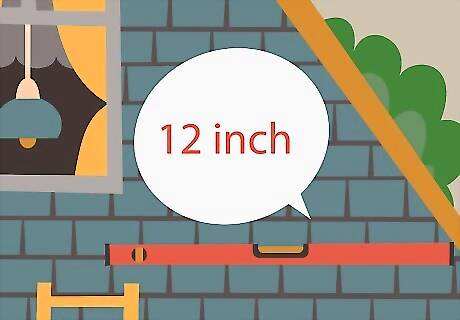
Find the 12 inch mark on the level. If your level does not have inch marking, measure it with a tape measure and draw on a 12 inch mark. 12 inches is the traditional measurement in the U.S. If you don't have an imperial ruler, however, you can use any units. Just use the same unit for all measurements, and measure a length at least this size (12 inches / 30 cm).
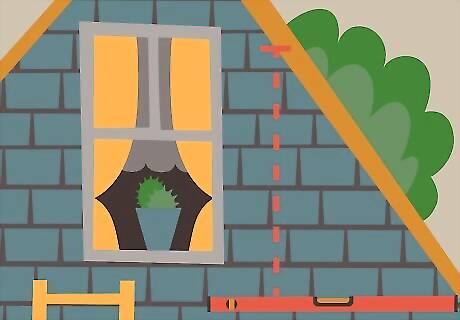
Measure the vertical distance from level to rafter. Extend your tape measure perpendicular to the level. Measure the distance from the 12 inch mark to the underside of the same rafter, directly above it. Make sure the level stays in position during this measurement.
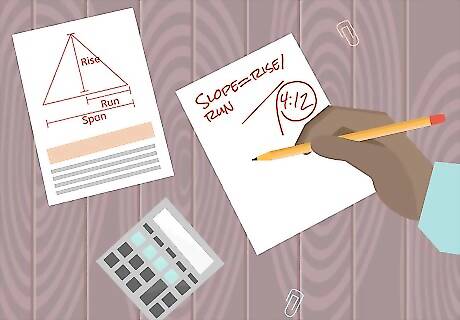
Find the slope. The slope of your roof is the ratio of vertical distance (rise) to horizontal distance (run). Just write down the measurements you found. There's no need to simplify them. For example, if you find 4 inches of height with the tape measure at the 12 inch mark on the level, your slope is 4:12 or "4 in 12." Most people looking for "pitch" are really interested in this measurement. In technical terms, pitch has a different definition. If you're not sure if you have the right measurement, skip down to find the pitch.
Measuring Slope from the Roof Surface

Confirm the roof is safe to walk on. Climb up a ladder without your tools to take a look at the roof surface. Do not walk on a wet or icy roof, a very steep roof, or one with obvious structural damage. Even a mild slope can be dangerous to walk on if the roofing material is slippery, gritty (worn composite shingles), or loose (wood shakes or any worn shingles). It's best to walk on a roof when the sun is out and morning dew has evaporated. Never walk directly on a slate roof; slates can easily be broken by stepping on them. Special scaffolding equipment is required to safely work on slate roofs, both to prevent damage to slates and to mitigate fall hazard. Curled shingles or other non-flat roof coverings make this method less accurate. Consider measuring from the rake board at the edge of the roof instead. Wear clean, dry, basketball shoes or sneakers with soft soles. These have good traction but are less likely to leave footprints on your roof.

Measure 12 inches on a carpenter's level. Mark the length with the marker. Many levels are equipped with a ruler on the side, but this mark is more visible.

Organize your tools. Place the level, a tape measure, paper, and pen in a bucket or tool belt. Make sure you can ascend the ladder and move around easily while carrying the tools. It may help to lock your tape measure in extended position before you climb. You'll only need about 12 inches.
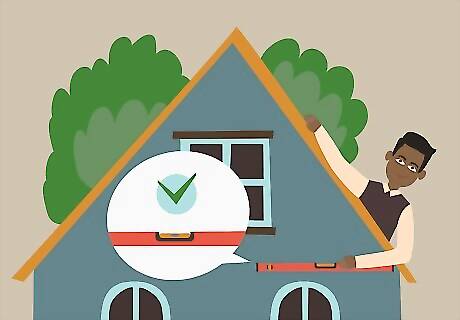
Position the level. Place one end of the level against the roof. Pivot it up or down until the horizontal vial's bubble is between the two lines. If your roof is particularly bumpy, lay down a flat board over the roof first. Place the end of the level against this board. Crouch down or sit, as to minimize the potential for slipping.
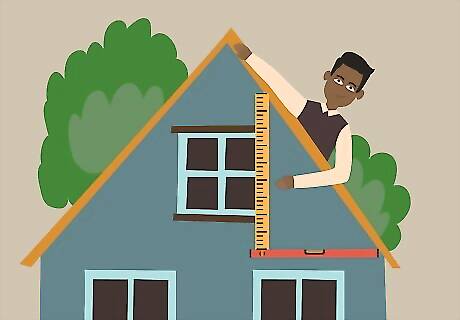
Measure the vertical distance from roof to level. Hold the 0-mark of the tape measure against the roof. Extend it upward so it is perpendicular to the level. Move the tape measure along the the roof until it hits the level at exactly the 12-inch mark. Note the vertical distance on the tape measure and write this value down.
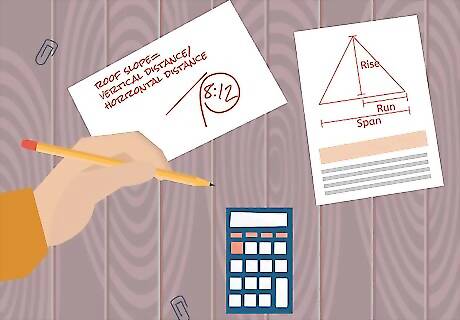
Calculate the roof slope. Write the roof slope as the ratio of "rise over run," or vertical distance over horizontal distance. For example, if your tape measure found a 6 inch vertical distance to the 12 inch mark on your level, the slope is 6:12 or "6 in 12". In the United States, slopes are traditionally given with 12 as the second number of the ratio. There's no need to simplify the ratio.
Calculating Pitch from Slope

Define roof slope. Most people interested in roof "pitch" are actually measuring the slope, which is the most useful measurement when considering roofing material and rainwater. Slope is the correct term for the ratio of vertical to horizontal distance on a particular plane of the roof. Even carpenters often use the terms slope and pitch interchangeably. For example, if one side of the roof rises by 8 inches for every 12 inches of horizontal distance, it has a slope of "8 in 12" or "8:12."

Understand roof pitch. Technically, roof pitch is the ratio of total vertical roof height (the rise) to total horizontal distance from wall to wall (the span). Although most homeowners do not need to measure pitch, it still pays to understand this term. When you're arranging for repairs or roofing material, your calculations will be way off if you misinterpret "pitch" to mean "slope." Again, some carpenters and manufacturers use both terms to mean "slope." Just ask if there's any confusion about which measurement they're referring to. For example, if a roof is 32 feet from wall to wall and the ridge is 8 feet above the walls, the pitch has an 8 to 32 pitch, simplifying to "1 to 4" or "1/4".
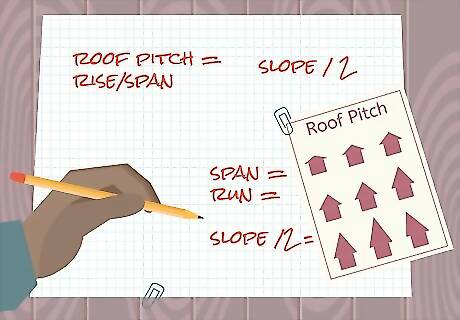
Find the pitch. If you do need to calculate the pitch, an estimate or shortcut is usually more practical than measuring the roof's overall dimensions. Here are a couple examples: For a simple gable roof, the span (wall to wall) will be twice the size of the run (wall to ridge, horizontally). Divide the slope by two to get the pitch. For a roof with the ridge above one wall, the span is the same as the run. The slope is the same as the pitch. For more complex roofs, you may need to calculate it section by section. Carpenters use special conversion charts to estimate the roofing material required based on the slope and shape.


















Comments
0 comment